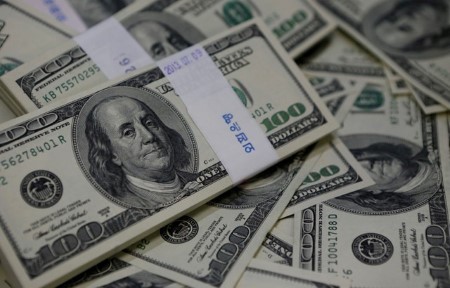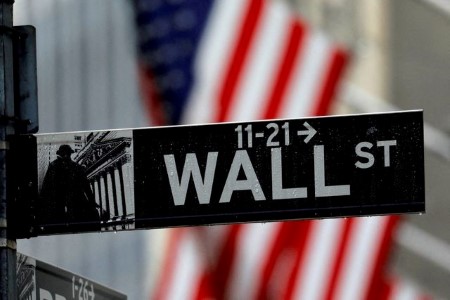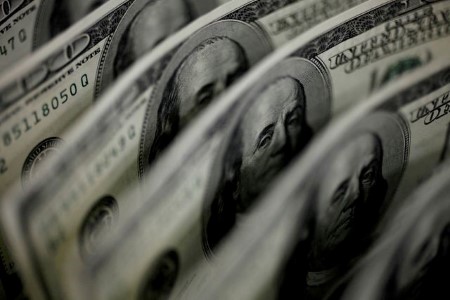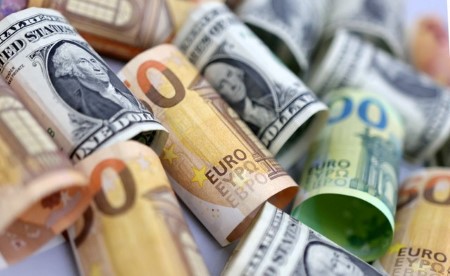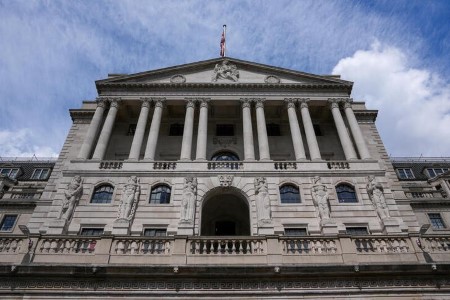NEW YORK, Nov 2 (Reuters) – The dollar regained some strength on Wednesday after Federal Reserve Chair Jerome Powell said it was premature to discuss a pause in its hiking of interest rates to battle rising consumer prices, as there is “no sense that inflation is coming down.”
The Fed, as markets had expected, raised its key lending rate by 75 basis points for the fourth straight time after a two-day meeting of policy-makers.
Markets initially read the Fed’s statement at the end of the meeting as dovish and a signal that future rate increases to tame high inflation could be made in smaller increments.
Yet Powell made clear at the press conference after the statement that a mistake in not tightening monetary policy enough would risk dealing with entrenched inflation.
“If you undertighten, it is a year or two down the road you realize you haven’t got inflation under control,” he said.
A change in pace in rate hikes could come at the Fed’s next meeting in December, Powell said. But he cautioned extensive uncertainty remains about how high rates need to go and that they could end up higher than policymakers previously thought.
“There are still a lot of missing pieces in terms of Fed policy and where the dollar goes from here because we’re going to have a pair of jobs reports and inflation surveys before we next hear from the Fed,” said Joe Manimbo, senior market analyst at Convera in Washington.
Equities and other risk assets at first rose after the Fed statement was released, but stocks on Wall Street closed sharply lower after Powell spoke, as hopes the Fed would ease its hiking campaign quickly dissipated.
“We have not seen a pivot, a pivot is looking further over the horizon,” Manimbo said.
“The near-term outlook calls for the dollar staying strong and resilient because even if the Fed is nearing the finish line for rate hikes, it’s not expected to pivot to rate cuts for a very long time yet,” he said.
The euro initially rose against the dollar but later turned lower, down 0.5% at USD 0.9825. The Japanese yen strengthened 0.31% versus the greenback at 147.79 per dollar.0.3
The Fed’s battle against inflation running at four-decade highs has unleashed the most aggressive hiking campaign in more than a decade.
Future markets were divided on how high the Fed will increase rates at its next meeting on Dec. 13-14. The CME Group’s FedWatch tool showed a 56.8% probability of a 50 basis point increase, and a 43.2% chance of a 75 bps increase.
Growing expectations that the Fed would dial down the aggressiveness of its rate hikes have weighed on the dollar in recent weeks.
Sterling fell, last down 0.82% on the day at USD 1.1389. The Bank of England on Thursday also is expected to announce a 75-basis-point rate increase.
The yen has slipped about 22% against the dollar this year, leading traders to be on alert for a possible intervention.
Japanese authorities are widely considered to have intervened in FX markets several times since September to pull the yen back from 32-year lows.
Japan’s currency interventions have been stealth operations in order to maximize the effects of its forays into the market, Finance Minister Shunichi Suzuki said on Tuesday, after the government spent a record USD 43 billion supporting the yen last month.
(Reporting by Herbert Lash, additional reporting by Saqib Iqbal Ahmed in New York and Joice Alves in London; Editing by Mark Potter, Alex Richardson, Leslie Adler, William Maclean)







 DOWNLOAD
DOWNLOAD




